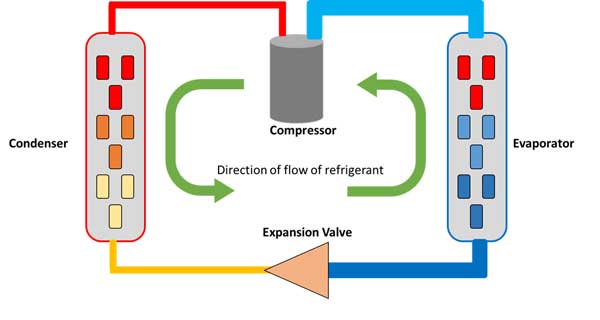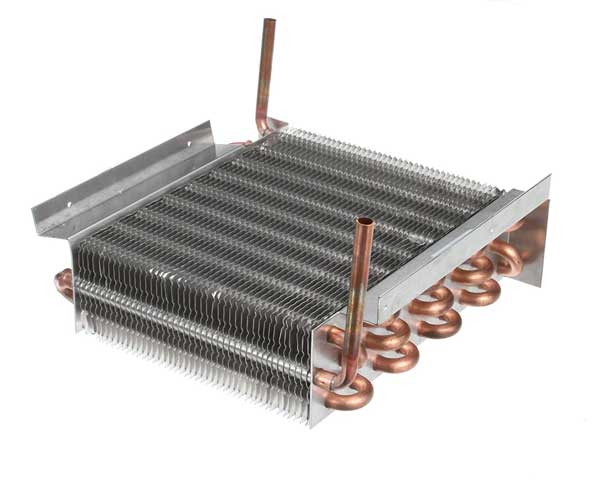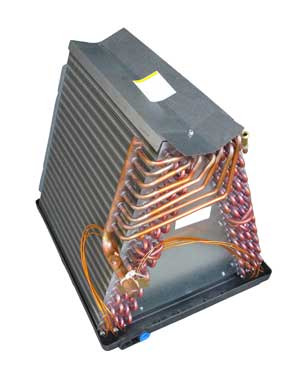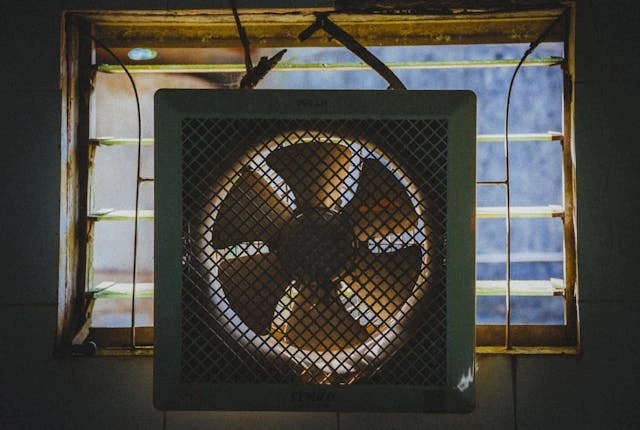Difference Between AC Condenser Coil And Evaporator Coil
Air conditioning systems comprise various components, including the AC condenser coil and evaporator coil, which collaborate to control indoor temperature and humidity.
Although both the condenser and evaporator coils are vital to the air conditioning system, they serve distinct functions and have unique characteristics. Let’s explore the differences between evaporator coils and condenser coils, and how they work together to maintain a comfortable indoor environment.

What is an AC Condenser Coil?
The AC condenser coil is a crucial component of the air conditioning system, typically located outdoors, either on the roof or on a platform near the ground. Its main role is to release the heat absorbed by the refrigerant as it circulates through the system.
Composed of thin metal fins, the condenser coil dissipates heat into the surrounding air. It converts the refrigerant from a hot, high-pressure gas into a cooler, low-pressure liquid by allowing the refrigerant to pass through the coil, where it releases heat to the outside environment.
The condenser coil plays an essential role in the air conditioning process by lowering the refrigerant's temperature, enhancing its ability to absorb heat from indoor air. The heat released by the condenser is typically expelled into the air using a fan or blower.

What is an Evaporator Coil?
The evaporator coil is another essential component of an air conditioning system, typically found inside the building, often in the air handler or furnace. Its main role is to absorb heat from the indoor air as it flows over the coil.
Similar to the condenser coil, the evaporator coil consists of thin metal fins that facilitate the transfer of heat from the air to the refrigerant. It converts the refrigerant from a cool, low-pressure liquid into a hot, high-pressure gas. As the refrigerant absorbs heat from the indoor air, it vaporizes and transforms into a gas, which is then circulated back to the condenser coil to be cooled again.

The evaporator coil is essential to the air conditioning process, reducing the temperature of indoor air as it flows over the coil, ensuring the space remains comfortable and cool.
Evaporator Coil vs. Condenser Coil: Key Differences
Now that we've explored the basic functions of the evaporator and condenser coils, let’s examine the key differences between these two components:
Location:
As mentioned earlier, the condenser coil is situated outside the building, whereas the evaporator coil is found indoors.
Direction of Heat Transfer:
The primary distinction between the two coils lies in their heat transfer direction. The condenser coil releases heat to the outside air, while the evaporator coil absorbs heat from the indoor air.
Type of Refrigerant:
Another significant difference is the type of refrigerant each coil uses. The condenser coil operates with a high-pressure refrigerant, while the evaporator coil utilizes a low-pressure refrigerant.
Purpose:
Although both coils are essential to the air conditioning system, they serve different functions. The condenser coil is responsible for releasing heat and converting the refrigerant into a low-pressure state.
Benefits and Need for AC condenser and Evaporator Coil
The system cannot effectively regulate the temperature and humidity of indoor air without these essential components.
It's not accurate to claim that one coil is more effective or beneficial than the other. Both the condenser and evaporator coils have distinct functions and work together to ensure the air conditioning system operates efficiently.
The condenser coil releases the heat absorbed by the refrigerant as it circulates through the system, while the evaporator coil absorbs heat from the indoor air.
Without the condenser coil, the system wouldn't be able to expel the heat it collects, preventing the refrigerant from cooling down. Likewise, without the evaporator coil, the system would fail to absorb heat from the indoor air, leaving the space uncooled.
In short, your AC unit is incomplete without both components.
Conclusion
To grasp the difference between AC condenser coils and evaporator coils, you already have a solid understanding of how AC units work. These key components are essential for heat exchange.
This blog will help you know how to respond when your technician raises concerns about either of these components.


